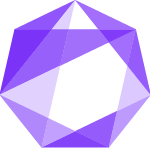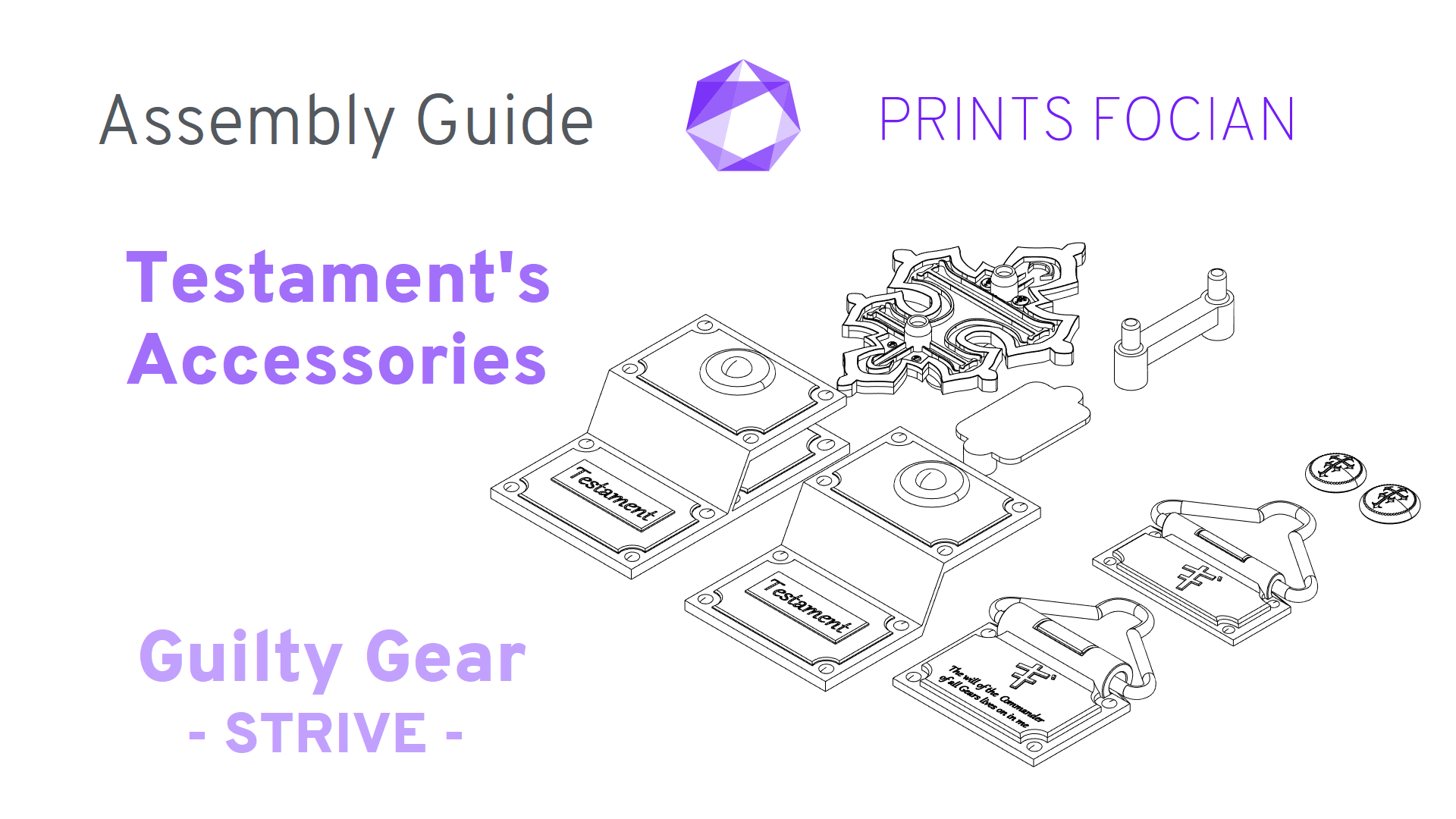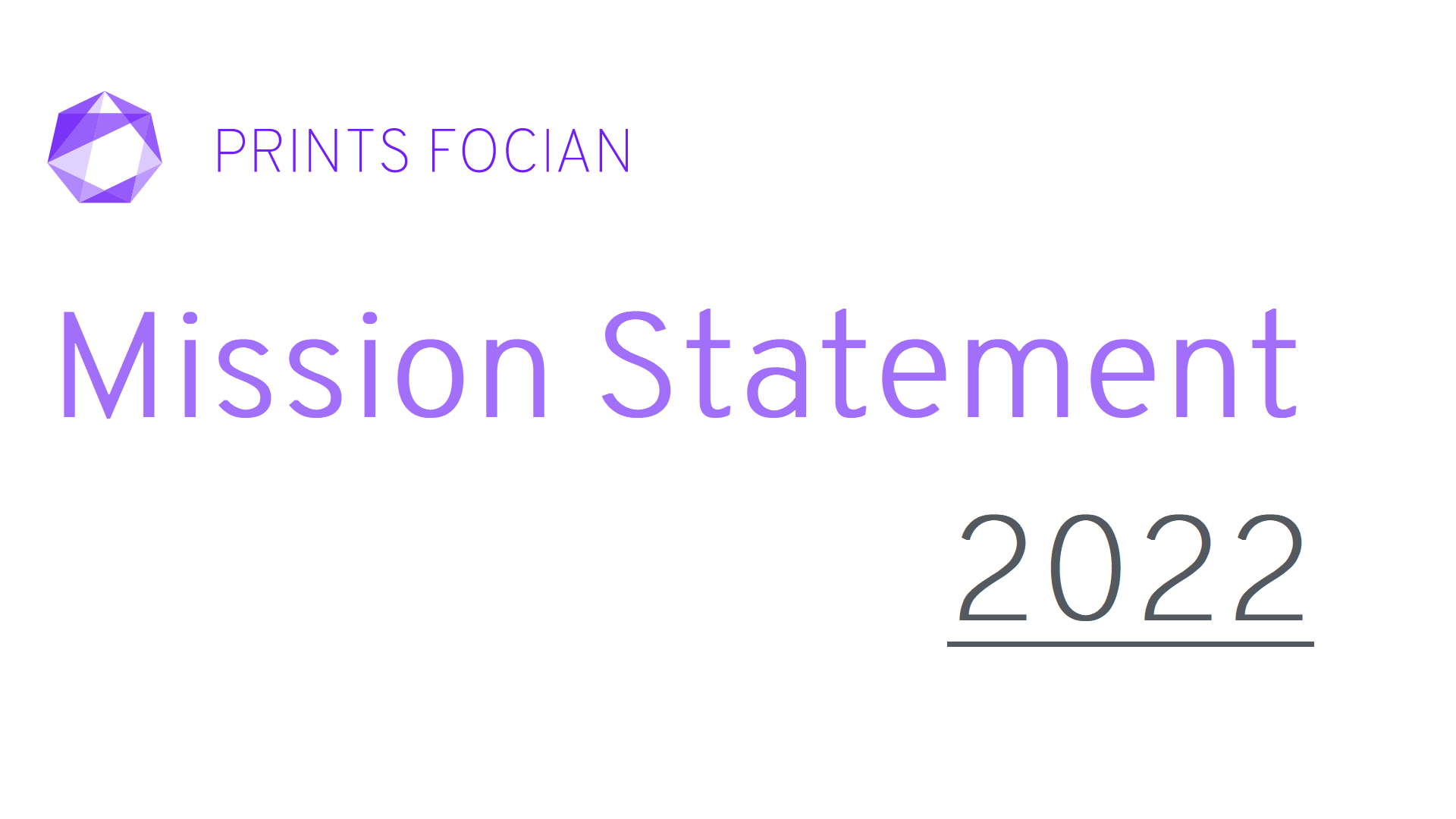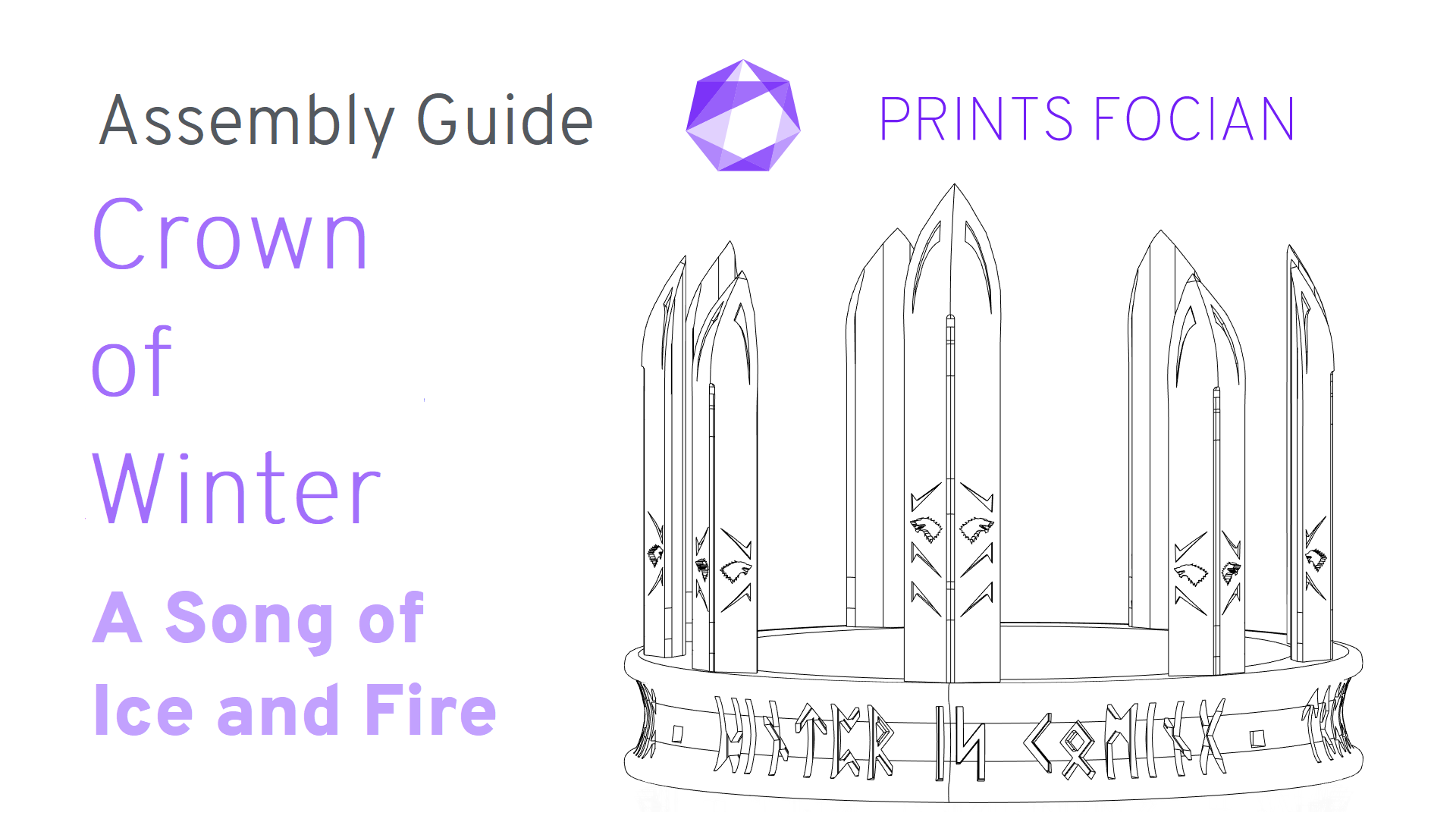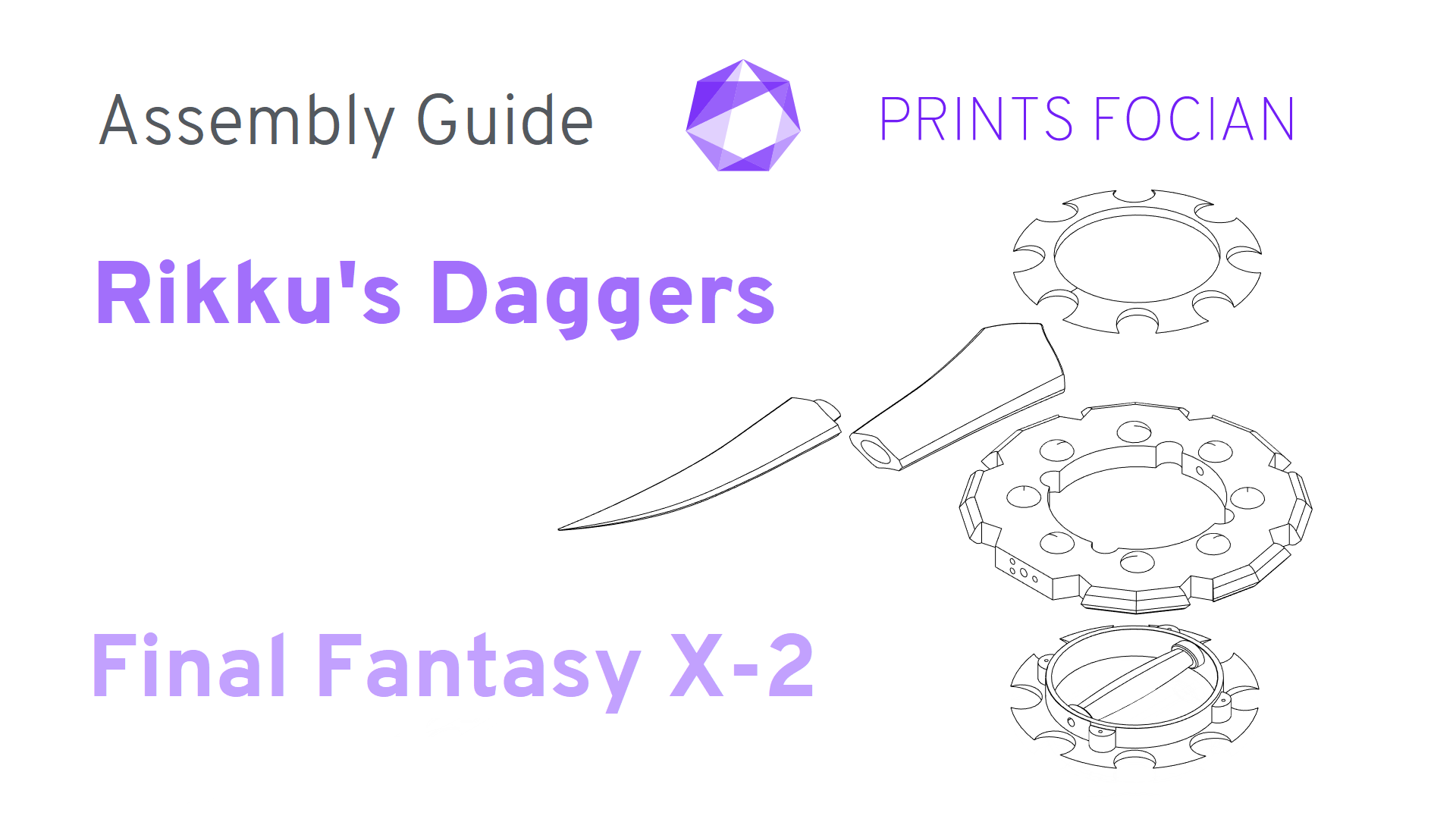Introduction
In this Assembly Guide I’ll be offering help and advice to get the most out of your purchased Print It Yourself version of the cosplay Accessory pack for Testament, from Guilty Gear Strive.
Check out the links below for the available versions:
This guide is here to offer technical help to you in a build, if you would like to see more of this project in general, check out the Overview.
If you’re looking to use this as part of a cosplay, the information in this guide should assist you in making the best-finished product you can!
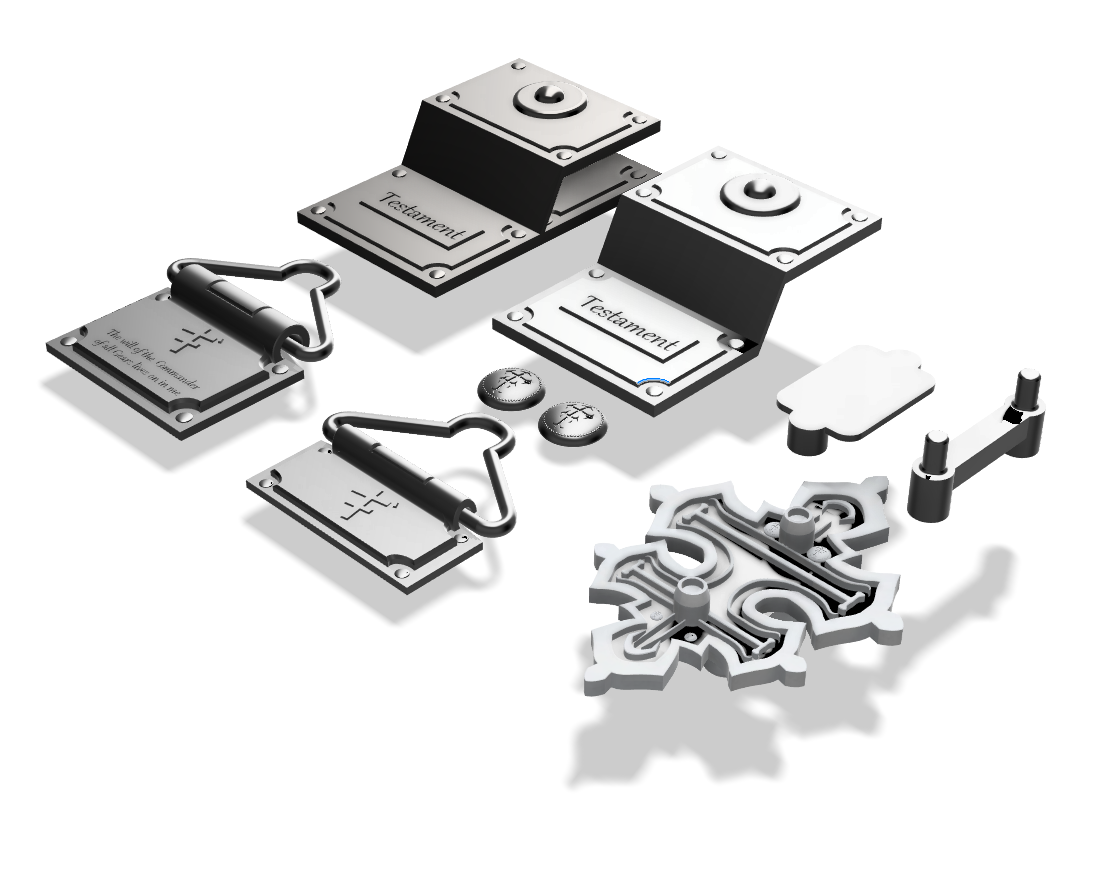
Difficulty
- Easy – An exceptionally easy project, most or all of the parts assemble in a very obvious manner. You’ll have difficulty going wrong on this project. Accessible to all build enthusiasts!
- Normal – This will mostly be a straightforward project. Some of the finer details may need to be checked against this Assembly Guide, but most build enthusiasts should have no issue creating a great-looking finished model.
- Heroic – This will have a fair few tricky moments. It will need more care and attention to get the best out of it when compared to easier models. I would not recommend this for a first project as the difficulty could be frustrating.
- Legendary – I do not recommend purchasing a piece of work that I have deemed as Legendary Difficulty unless you are an experienced builder or maker. Projects of this nature will need a lot of work, time and patience to complete. Technical knowledge about the material used will help, as will a versatile toolkit.

Package Contents
Print It Yourself:
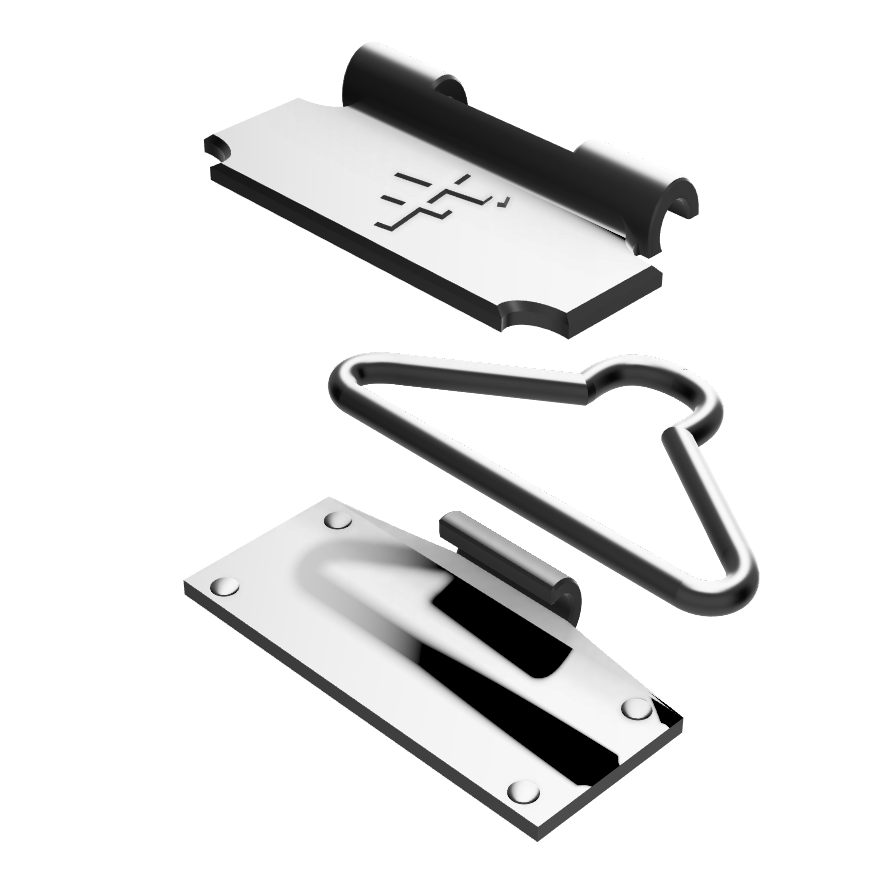
Purchase of the Print It Yourself version will allow you to print the design for Testament’s Cosplay Accessory Kit, and you’ll also receive a BY-NC-ND 4.0 licence for the files.
The following components with their respective [FILE_NAME] will be instantly available for download upon purchase:
- Button with protrusion [GGT_BUTTON_OUT]
- Button with tunnel [GGT_BUTTON_IN]
- Slanted Clip without back [GGT_SLANTED_CLIP]
- Slanted Clip with back [GGT_SLANTED_CLIP_BACKED]
- Large Hinge Base [GGT_HINGE_MAX_BASE]
- Large Hinge Clip [GGT_HINGE_MAX_CLIP]
- Large Hinge Plate [GGT_HINGE_MAX_PLATE]
- Small Hinge Base [GGT_HINGE_MIN_BASE]
- Small Hinge Clip [GGT_HINGE_MIN_CLIP]
- Small Hinge Plate [GGT_HINGE_MIN_PLATE]
- Main Skull Plate [GGT_SKULL_PLATE]
- Flat Skull Plate Attachment [GGT_SKULL_PLATE_MAX]
- Slim Skull Plate Attachment [GGT_SKULL_PLATE_MIN]
- The BY-NC-ND 4.0 licence for printing [GGT BY-NC-ND 4.0]
Licence Type:
With my 3D files, you will also receive a non-transferable Creative Commons Licence. As standard, this will be the CC BY-NC-ND 4.0 licence, although other types are available upon request.
The “human-readable” version of the licence type can be found here.
I would like to highlight the Non-commercial part. “Non-commercial means not primarily intended for or directed towards commercial advantage or monetary compensation.” If you are using any designs of mine as part of your work (such as a cosplayer), then this is absolutely fine, and actively encouraged! Or perhaps you made an item a while back and now want to sell it on? You didn’t buy the item for the primary purpose of selling it on, again, this is absolutely fine!
However, if you are purchasing the STL files with a view in mind to sell the output, raw or finished? This will require a commercial licence.
Assembly
Unique Build Information:
All items are sized to be printed without the need to scale and the sizes are documented below. However, I do recommend double-checking to ensure it fits with what you intend to use it for, and adjust accordingly.
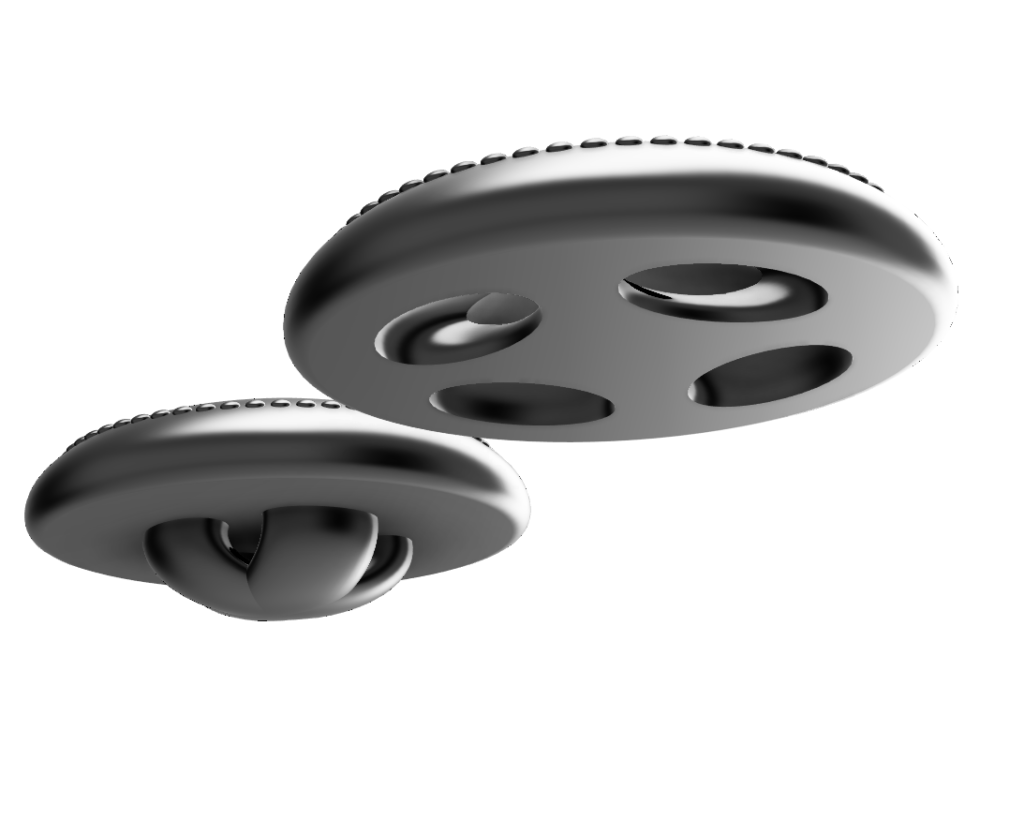
Button
20mm * 20mm * (5mm or 8mm)
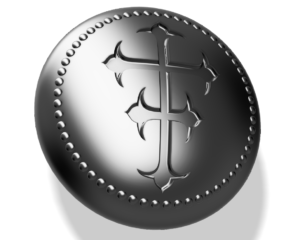
Two options are available to join the buttons when sewing. One of them has tunnels through the button for the thread, the other has a protrusion on the underside for the thread. Beyond the back, they are both functionally identical.
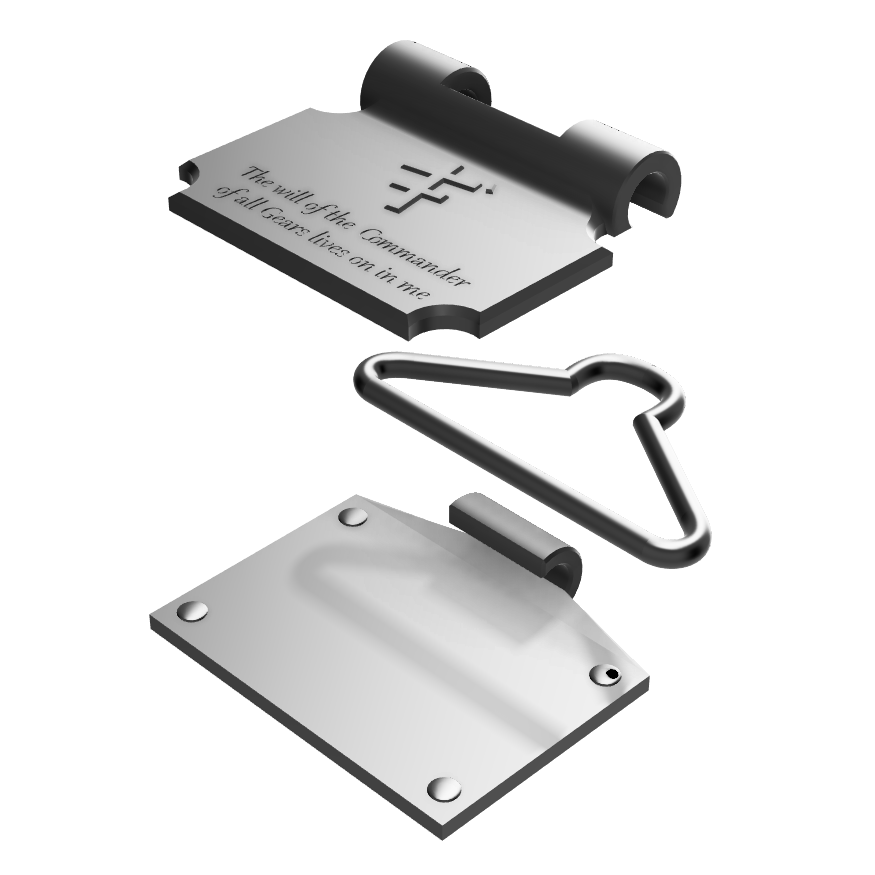
Large Clip
68mm * 64mm * 5mm
For these, I recommend sanding first if required, then putting a small piece of masking tape on both flat planes that will be hidden by each other (underside of the upper part with the symbol/text, top side of the bottom part with the studs).
Don’t cover the whole area, just enough for some glue later. Then finish all the parts as standard, then remove the tape and affix permanently. Place the hinge in the bottom part and glue the face plates together.
There is enough tolerance for the hinge to move freely, but be careful not to use too much glue, you should only need a tiny amount to stick the two faces together.

Small Clip
82mm * 64mm * 13mm
Exactly the same process as above: For these, I recommend sanding first if required, then putting a small piece of masking tape on both flat planes that will be hidden by each other (underside of the upper part with the symbol/text, top side of the bottom part with the studs).
Don’t cover the whole area, just enough for some glue later. Then finish all the parts as standard, then remove the tape and affix permanently. Place the hinge in the bottom part and glue the face plates together.
There is enough tolerance for the hinge to move freely, but be careful not to use too much glue, you should only need a tiny amount to stick the two faces together.
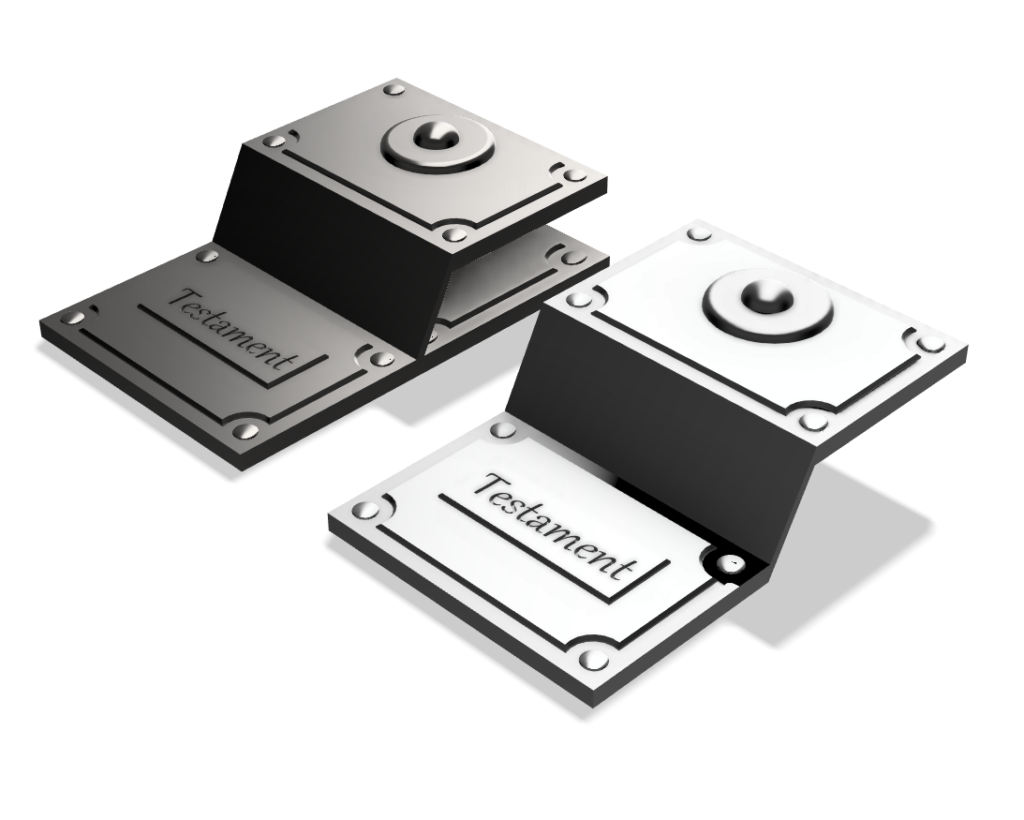
Slanted Clip
101mm * 65mm * 30mm
Much like the buttons previously, there are two options for this part depending on how you want to join it.
They are both one solid unit and likely the most important piece to scale to your requirements. The version with the larger bottom part can effectively be scaled down the Z axis if you want it to have some grip on a cloth edge (although I still recommend an additional attachment method, such as glue).
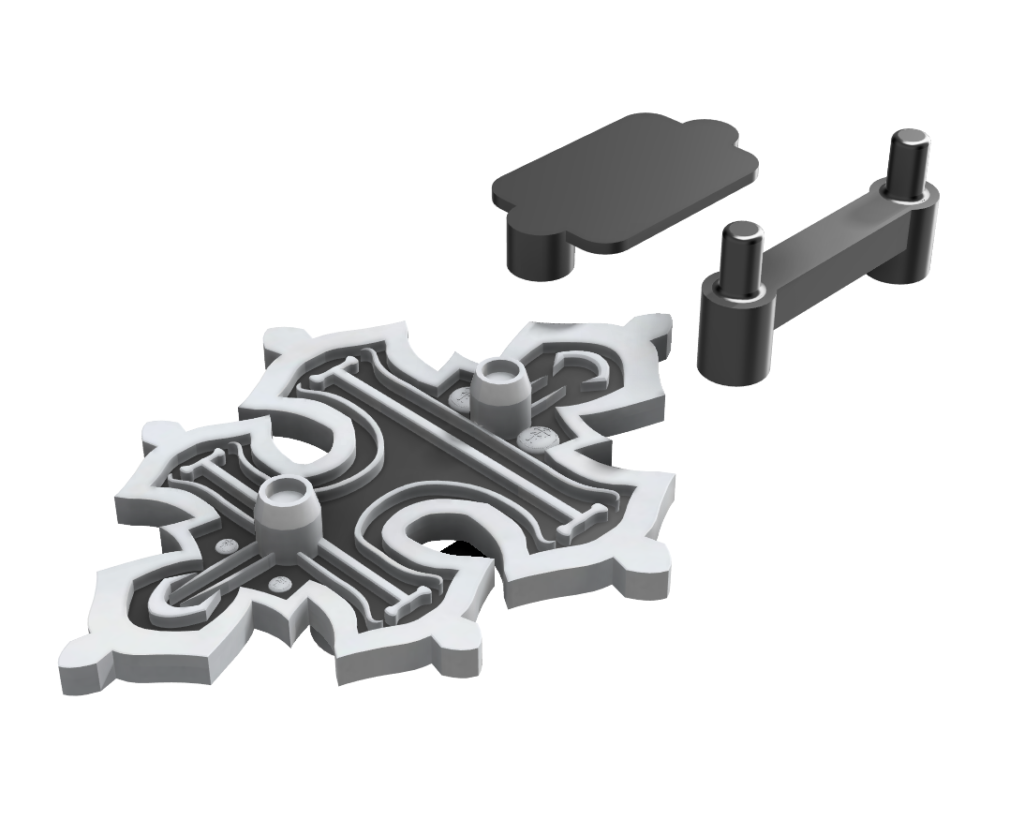
Skull Plate
115mm * 82 mm * 22mm
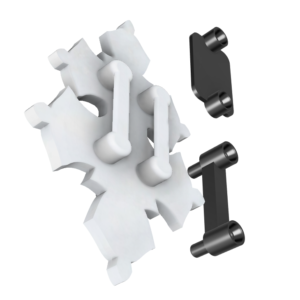
The skull isn’t included in this, however, there are some really great options available. My best recommendation is to type something along the lines of “6cm Halloween skull” into any large online retailer for a plethora of options. If you can’t find the right-sized skull, the plate and all of its parts can be easily scaled to accommodate what you can find. Then, carefully remove the front third or so off the skull and use it (after painting) to join to the detachable plate.
There are two different kinds of plates included. One of them is a flat face, and the other has two protrusions of 6mm * 10mm spaced 40mm apart from each other. The first is best for glueing face to face, while the slimmer one is ideal if you want to drill some 6mm holes in the flat back of the skull for extra support.
Both the main plate and the two detachable ones have holes in place for magnets to be glued. The exact size of the holes are 5.5mm * 2.15mm, made for 5mm * 2mm magnets. Amazon has the ones I used in the (unaffiliated) link here.
There is an attached bracket on the back to allow it to be looped on the back of a belt (although be conscious of the material used to print it if it is bearing any weight).
General Information:
- Small hand tools are used in the support removal and some small marks may be present
- Ensure you wear eye protection when removing support material as it takes just the smallest amount of force to ding a shred of plastic into an eye
- Material colour is subject to change
- Take more care when sanding any resin products, both in terms of waste material and the ease of accidentally ruining the finish
- I make all the holes for the support rod with an additional 0.5mm tolerance on the diameter, and 2mm on the length
- If the metal rods you have are quite shiny, I’d recommend a gentle sanding with low grit sandpaper to help glue adhesion
- All support rod holes on Raw Build Kits are drilled and checked with the correctly sized rod to ensure a good fit
- All support rods displayed are not essential and only included if explicitly stated
- Consider lighter support materials, such as tubing or wooden dowel, if weight is a consideration. On a shelf? No issue. After eight hours carrying it around? Every gram makes a difference
- For the Print It Yourself versions, I try and ensure that no single part is longer than 250mm
- If you have a larger printer and would rather the files used in the Raw Build, feel free to message me before or after purchase
Thanks for reading!
If you enjoyed this, perhaps you would like to see another Project?
Love what you saw? Got a project in mind? Feel free to reach out and let me know!

